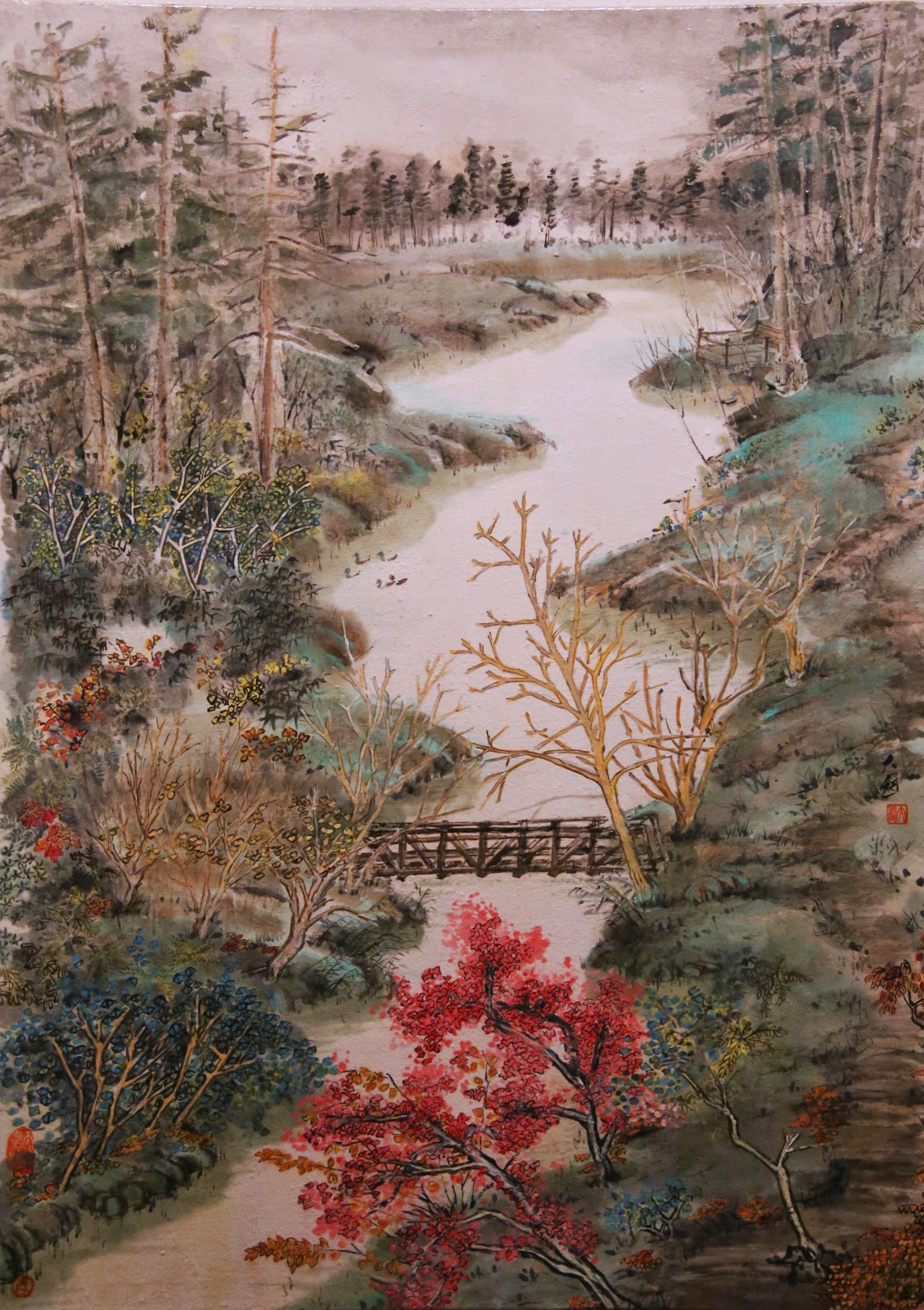My solution to that was to hang everything up for a while, and not feel guilty about it. After all I am doing this for fun, and my livelihood does not depend on my lifting a paint brush. For anybody who has come through this gate, we know that we are just pretending to not think about it consciously.. the computing still happens, just not on the desktop.
I finally decided that if my tendency was to be nitty gritty, why don't I just go with the flow and not fight it. I'll find something meticulous to paint. I want to give my anal retentiveness a work out. So I tackled with painting a courtyard. A formal Chinese courtyard.
I chose to use the semi-sized paper again. I felt like this paper would be more suited to the repeated layering and build-up that I intended to do to this painting.
Instead of trying to paint this in a traditional Chinese style, I decided to just paint what comes naturally. For me, it would be what one would see from a photograph.... a black and white photograph. I know I've written about what constitues Chinese brush painting before,but I am willing to let all theories slide, and just let my painting happen.
My first step was to sketch out my plot with diluted ink. The focal point would be a huge Lake Tai limestone that are ubiquitous in formal Chinese gardens. This feature would be framed by the intricate lattice work found in the pavilion and breezeway. I would add drama to the painting by playing up the light values, something that is not emphasized in traditional painting styles.
I tried to put down all the darkest values first, to give me a framework of subsequent greys.
I also wanted to portray some of the branches and trunks as a negative space. This is the part that satiated my compulsion of being nitty gritty with details. I was allowed the opportunity to design the conduit where the branches would occupy, and darken the areas around that with details of leaves and dots and what not.
The blank area between the tiled roofs ( red circle ) is there not only for aesthetic reasons, but to show separation and establish the fore/aft relationship.
The contour line on this Lake Tai limestone felt week and tentative. The line was suppose to describe the physical property of the object. After re-tracing, the line looked a little sterner, more befitting the rock.
I decided to do some of the stalks as positive space, while others as negative ( red circles ). This is to create a dialogue and intrigue between the lower left and right halves of the painting. I've also planted a few blades of grass on the negative space grass bed (blue circle). I enjoy this effect because it added to the 3 dimensional feel.
Drama was achieved when I boldly applied ink at the base of the rock as well as strategic spots in the grass bed. I tried to even up the tone of the painting by applying a diluted layer of ink wash.
stylize the painting. For now, I'll take a break.



















.JPG)
.JPG)



